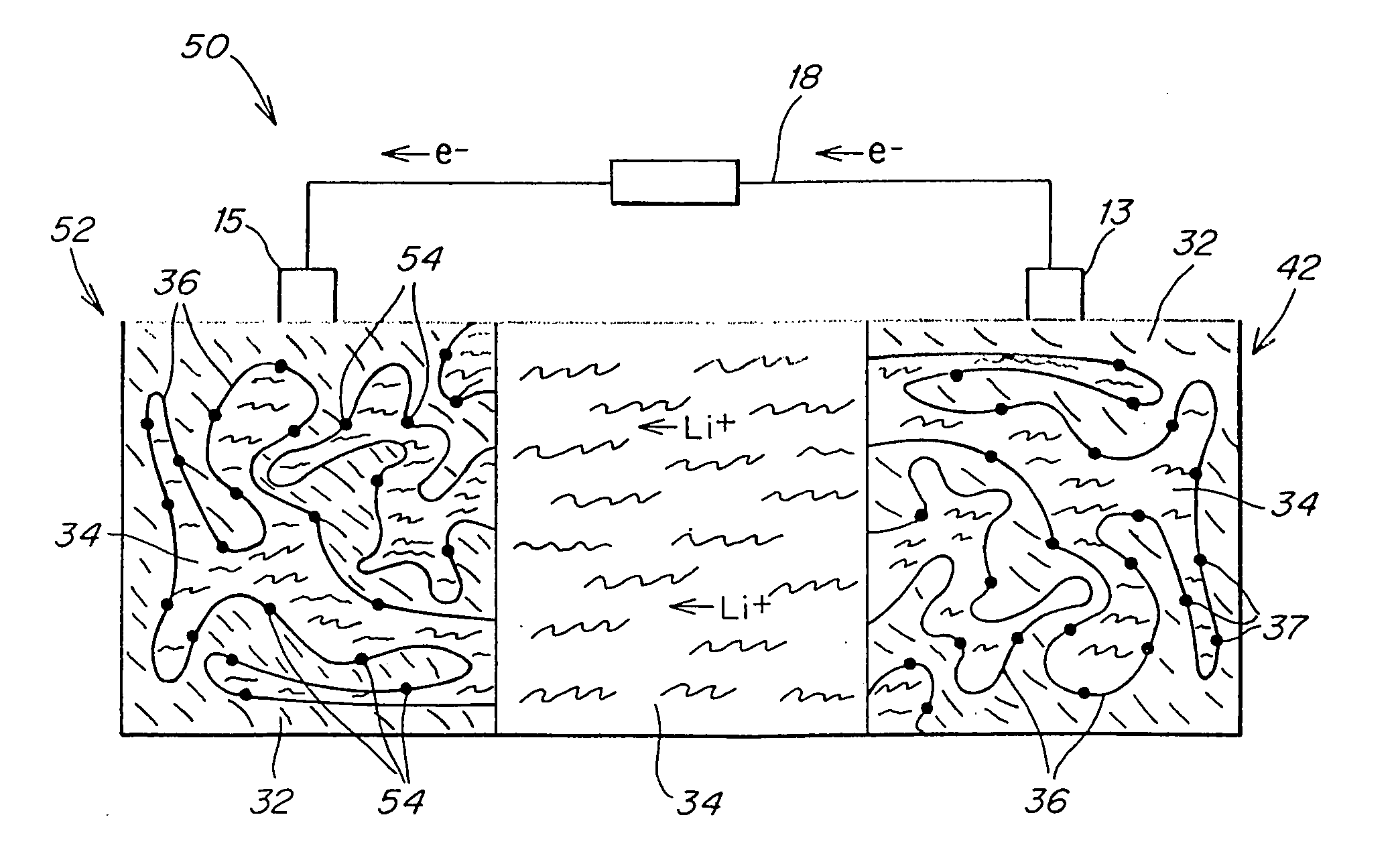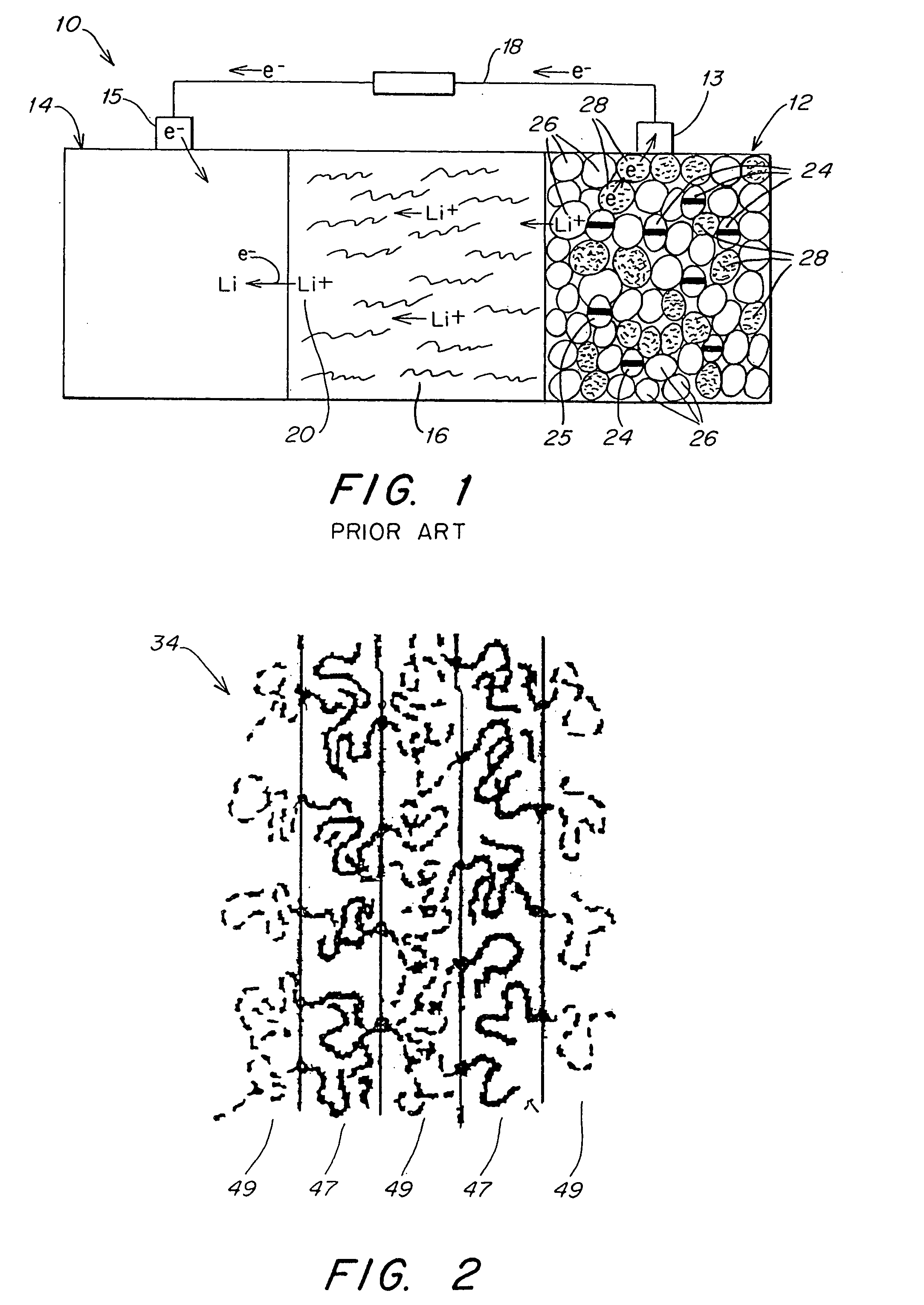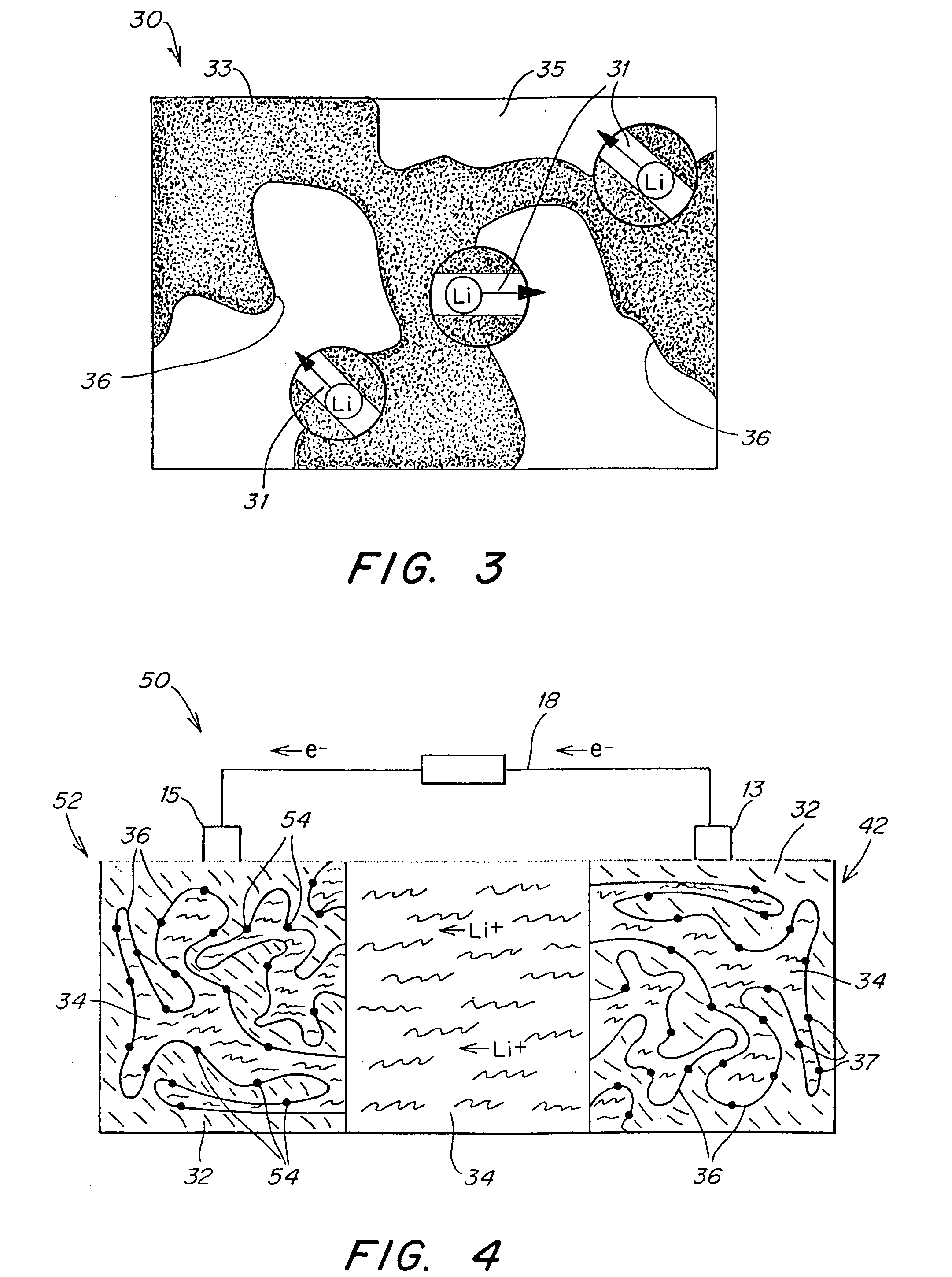Polymer electrolyte, intercalation compounds and electrodes for batteries
a technology of polymer electrolyte and intercalation compound, which is applied in the field of batteries, can solve the problems of limited energy supply capacity, difficult processing of lisub>x/sub>niosub>2 /sub>, and relatively high preparation cost of lisub>x/sub>tissub>2 /sub>, and achieves good ionic conductivity and dimensional stability. good, the effect of good processing efficiency
- Summary
- Abstract
- Description
- Claims
- Application Information
AI Technical Summary
Benefits of technology
Problems solved by technology
Method used
Image
Examples
example 1
Synthesis of LiCoO2 From Mixed Hydroxides
[0129] LiCoO2 crystallized in the α-NaFeO2 structure was prepared. 23.70 g of Co(OH)2 powder (formula weight 92.95, from Aldrich Chemical Company, Milwaukee, Wis.) and 11.23 g of LiOH.H2O powder (formula weight 41.96, from Aldrich Chemical Company), were mixed by ball-milling with aluminum oxide milling balls in a polypropylene jar at 120 rpm for 18 hours. The mixed hydroxide powders were heated to 600° C. in air in an alumina crucible and held for 8 hours, then cooled. Powder X-ray diffraction, FIG. 5, showed that the resulting powder had the highly-ordered α-NaFeO2 structure, indicated by the clear separation between the closely spaced diffraction peaks labeled (006) / (012) and (108) / (110).
example 2
Synthesis of LiAl0.25CO0.75O2 From Mixed Hydroxides
[0130] The compound LiAl0.25CO0.75O2, crystallized in the α-NaFeO2 structure, was prepared. 10.49 g of LiOH.H2O powder (formula weight 41.96, from Aldrich Chemical Company), 17.43 g of Co(OH)2 powder (formula weight 92.95, from Aldrich Chemical Company, Milwaukee, Wis.) and 4.88 g of Al(OH)3 (formula weight 78.00, from Aldrich Chemical Company, Milwaukee, Wis.) were mixed by ball-milling with aluminum oxide milling balls in a polypropylene jar at 120 rpm for 18 hours. The mixed hydroxide powders were heated to 850° C. in air in an alumina crucible and held for 3.5 hours, then cooled. Powder X-ray diffraction showed that the resulting powder had the highly-ordered α-NaFeO2 structure.
example 3
Synthesis of LiCoO2 by Hydroxide Precipitation and Freeze-Drying
[0131] LiCoO2 of the “HT” structure, i.e., the α-NaFeO2 structure, was prepared. Co(OH)2 was precipitated by adding 0.1 M solution of Co(NO3)2 (Alfa Aesar, Ward Hill, Mass.) in deionized water to a continuously stirred solution of LiOH.H2O in deionized water kept at pH=11, near the minimum solubility pH for Co(OH)2. The precipitate was allowed to digest for 12 h, then settled by centrifugation. Nitrate ions, which otherwise re-form into low-melting nitrate compounds upon drying which can melt and cause compositional segregation upon subsequent firing, were removed in a rinsing procedure. The supernatant liquid from precipitation was decanted, and the Co(OH)2 ultrasonically dispersed in a buffer solution of LiOH.H2O in deionized water at pH=11. The precipitate was settled by centrifugation, and the supernatant again decanted. This cycle of dispersion in a buffer solution, settling by centrifugation, and decanting was co...
PUM
| Property | Measurement | Unit |
|---|---|---|
| size | aaaaa | aaaaa |
| charging voltage | aaaaa | aaaaa |
| temperatures | aaaaa | aaaaa |
Abstract
Description
Claims
Application Information
 Login to View More
Login to View More - R&D
- Intellectual Property
- Life Sciences
- Materials
- Tech Scout
- Unparalleled Data Quality
- Higher Quality Content
- 60% Fewer Hallucinations
Browse by: Latest US Patents, China's latest patents, Technical Efficacy Thesaurus, Application Domain, Technology Topic, Popular Technical Reports.
© 2025 PatSnap. All rights reserved.Legal|Privacy policy|Modern Slavery Act Transparency Statement|Sitemap|About US| Contact US: help@patsnap.com



